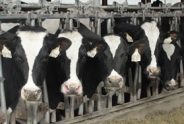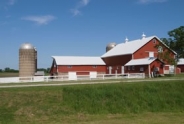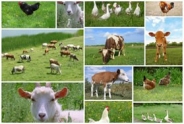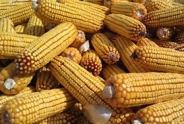Understanding Milk Protein
Camila Lage, Dairy Management Specialist
Southwest New York Dairy, Livestock and Field Crops Program
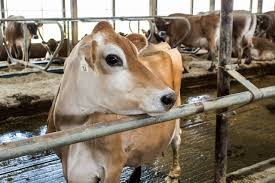
Understanding Milk Protein
By: Camila Lage, Dairy Management Specialist, SWNY Dairy, Livestock & Field Crops Team & Casey Havekes, Dairy Management Specialist, North Country Regional Ag Team
It's no surprise that a large portion of your milk check comes from milk components. The last year especially has demonstrated how fluctuations in component pricing can, and should, change our perspective on how to maximize components. Recently, a presentation delivered at Cornell Nutrition Conference by Dr. Kevin Harvatine highlighted that maybe we don't have to focus on only the higher priced component, but rather we can focus on maximizing both at the same time! The following article summarizes some concepts shared in Dr. Kevin Harvatine's presentation.
Since the onset of COVID19, the dairy industry has faced numerous challenges including the establishment of 'quotas', high feed prices, and fluctuating component pricing. This provides us with extra incentive to monitor and try to maximize both fat and protein percent. Dr. Harvatine highlighted that even if one component is paying better than the other, you shouldn't give up on the lower priced component because of the concept of marginal influence. For instance, if protein is paying better than fat, our thought process should be "well I already have this cow and am producing this much protein, now how much fat I can make on top of that?" Of course, this thought process should consider the profitability of what is being fed and how the cow can efficiently convert those ingredients into milk fat and protein. An interesting observation that Dr. Harvatine further emphasized is that overall, milk yield has little effect on protein and fat concentration at the herd level. In other words, there is no reason we can't have both high milk yield and high components simultaneously. After all, we shouldn't lose milk yield while trying to maximize components but rather focus on maximizing both.
After Dr. Harvatine explained the concept of maximizing both milk fat and protein, he switched gears and dived into the mechanisms driving milk protein synthesis. We can think of the mammary gland as a milk synthesis factory with three assembly lines: one for fat, one for protein, and one for lactose. He further explained that each of these lines have some level of coordinated regulation. After all, we never have 0% production of any of these components, so in one way or another they are working together to drive production. The challenge we face now is understanding how to minimize the coordination between lactose and protein because as Dr. Harvatine explains, although lactose is driving volume through osmotic regulations, it's also a waste of energy for the cow to produce. The end goal would be to increase fat and protein synthesis, but not lactose - similar to the way the Jersey cow functions. Getting back into the mechanism driving milk protein synthesis, Dr. Harvatine explains that it all starts at the DNA level. The cow has genes that instruct her to make protein, but those genes must be turned on and this all happens through hormonal regulation. With any biological process, there are key regulated and limiting steps and in the case of milk protein synthesis one of these limiting steps is amino acid availability. That being said, it was emphasized that although amino acids are important tools in our toolbox, it is hard to simply push metabolism by adding substrate. If we think about this from a human perspective, you cannot become a body builder by simply eating whey protein every day. You need to go to the gym and stimulate that muscle for it to grow. The opposite is also true, you can't get strong by working out hard if you don't have a balanced diet that gives you the substrate for this muscle to grow. In other words, milk protein synthesis is not solely driven by amino acid supply (although important), but cell signaling mechanisms have an equally important role.
Based on a large data set analyzing over 6000 herds for 12 months, Dr. Harvatine pointed out that variation in milk protein among herds is not as large as the variation in fat yield, but it shouldn't be ignored as it can equate to a lot of money and opportunity. The challenge is that we do not know exactly what is causing variation in milk protein yield and as a result we have a hard time managing it. When it comes to both milk fat and protein, there are two major influences: nutritional and non-nutritional factors. On the non-nutritional side, we have physiological effects such as genetics, season, time of the day, stage of lactation and parity. On the nutritional side, milk protein is largely influenced by energy supply and amino acid supply. Maximizing microbial protein yield should be our first goal. If we focus on this, we can get optimal amino acid supply, normal biohydrogenation, optimal acetate yield, and optimal energy intake. To increase milk protein yield we can focus on management (optimal calving intervals and DIM, cow comfort, forage quality, silage management, genetics, seasonal management, etc.) and nutrition (increase amino acid supply and energy supply for optimal rumen fermentation). At the end of the day, we should strive for high milk yield, high protein yield, and high fat yield all at the same time to maximize profitability. This should be the goal regardless of what independent components are paying!
Upcoming Events
Crops, Cows & Critters - Southwest New York Dairy, Livestock & Field Crops Newsletter Sponsorship
December 19, 2025
Our two forms of publications feature research-based and timely information from our four specialists, listed to the right, along with local event notifications and Cornell University outreach. This information is provided to participants who range from dairy, livestock, and field crops producers to agricultural suppliers and consultants.
Weekly Email Update: Shared with 625+ households who have signed up with our program.
Monthly Paper Mailer: To reach our stakeholders and farmers who lack internet access, we send out a monthly mailer where your company's logo and contact information would be featured with a mailing list of 330+ households.
If you sponsor our weekly and monthly publications you reach approximately 955 households.
Visit our website to view our newsletters!
2025 Cornell Food Beverage & Animal Feed Manufacturer Survey
December 19, 2025
Industry and Educational Advocates for New York State's Food, Beverage, and Animal Feed Manufacturing industries:
As you know, NYS has a diverse food and beverage manufacturing industry, in both the types of industries that exist and the wide distribution of firms by scale. Many manufacturing firms have strong backward linkages to agricultural production sectors in the state that support both farm-level and downstream food industry firms and consumers. In collaboration with the New York State Department of Agriculture and Markets, a team from Cornell University's Charles H. Dyson School of Applied Economics and Management has recently rolled out the 2025 New York State Food, Beverage, and Animal Feed Manufacturer Survey. The industry will benefit from an updated assessment of the industry that informs private and public investments and opportunities to support firm growth and improved profitability.
Cornell Organic Field Crops & Dairy Conference
March 6, 2026
Waterloo, NY
Farmers, researchers, educators, and agricultural service providers from across the Northeast are invited to the 2026 Cornell Organic Field Crops & Dairy Conference, held Friday, March 6, 2026, from 8:00 a.m. to 4:30 p.m. at the Lux Hotel & Conference Center in Waterloo, N.Y.
Co-hosted by New York Soil Health and Cornell CALS, the annual conference brings together leaders in organic grain, dairy, and livestock systems to share practical tools, new research, and farmer-tested strategies to support resilient and profitable organic production.
Announcements
No announcements at this time.


